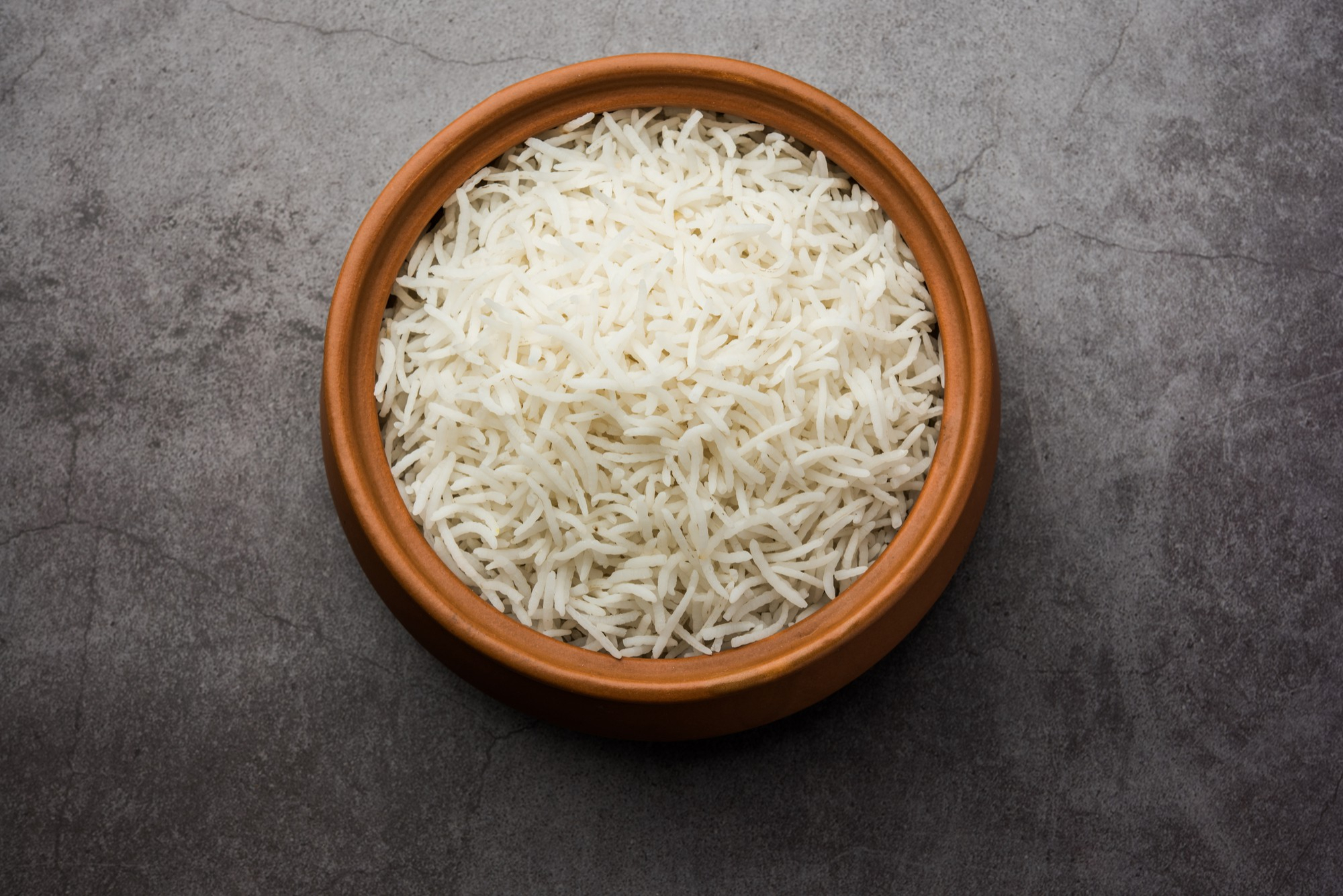Rice is cherished as a staple food worldwide and is consumed in various cuisines in various cultures. Everyone in India is fond of eating rice with dal, pickle, or vegetable curry and generally prefers to include it at least once in their daily meal. Its versatility the rice allows for the creation of numerous recipes.
In India, various types of rice are available, but the most popular are basmati and non-basmati rice. The wide variety of rice types, differing in grain size and color, can often be confusing. Let’s examine various rice types and determine which can be used to cook which cuisine.

The Background Story
- Non-Basmati Rice
Non-Basmati rice is a broad category that includes several rice varietals that are not Basmati. These varieties are grown in various regions around the globe and have their distinctive growth conditions and features. The non-Basmati Rice is well known for its versatility and is also easily available. Non-basmati rice is ideally used for cooking in various parts of the world due to its versatility and affordability. - Basmati Rice
On the contrary, basmati rice is a superior long-grain rice varietal largely cultivated on the Indian subcontinent, which makes it the main center for basmati rice manufacturers in India. The name “Basmati” originated from The Sanskrit term meaning “fragrant,” which appropriately characterizes its fragrant properties. Basmati rice is known for its long grains, rich aroma, and exquisite taste.
Appearance
- Non-Basmati Rice
The non-basmati rice are smaller and have wider grains than the grains of basmati rice. They seem sturdier and lack the tendency to lengthen as the Basmati grains. There are two varieties of colors which non-basmati rice is found viz white or brown.
- Basmati Rice
Basmati Rice is distinguished by its long, thin grains, which lengthen even more when cooked. The grains are more aromatic and whiter in color. The grain length distinguishes the basmati rice from the other available rice types.
Fragrance And Taste
- Non-Basmati Rice
Non-Basmati rice, despite its neutral scent, is praised for its ability to absorb the tastes of the meals it is cooked with. Its flavor is delicate and versatile, giving it an excellent complement to a variety of savory and sweet foods.
- Basmati Rice
The distinctive scent of Basmati rice is its distinguishing attribute. It has a natural, nutty aroma that improves the dining experience. Basmati rice, when cooked, has a delicate, almost buttery taste that compliments a variety of cuisines. It has a unique and distinctive flavor.
Gourmet Uses
- Non-Basmati Rice
The adaptability and versatility of the non-basmati rice makes it an ideal choice to be used for various dishes. Non-basmati rice is used for cooking dishes such as sauteed rice, risotto, and rice pudding. Its mild taste lets it work nicely with a variety of dishes and spices. - Basmati Rice
Basmati Rice has been used for years for making unique dishes such as biryani’s, shahi pulao, Payesh, kheer and many more. Basmati rice’s fragrant qualities and unique flavor make it a vital element for special events and celebratory dinners.
Cooking Method
- Non-Basmati Rice
For cooking non-basmati rice, demands a shorter boiling time and a greater water-to-rice ratio. This type of rice can be cooked by using cooking methods such as absorption and boiling. - Basmati Rice
The cooking process of the basmati rice takes a little longer than the non-Basmati Rice. To keep the grain’s integrity and aroma, cook for longer and use less water-to-rice. The “absorption” approach is commonly used to guarantee that the rice keeps its separate, non-sticky grains.
Dietary Value
- Non-Basmati Rice
The non-basmati rice is considered as a good source of carbs and certain essential nutrients. Consuming one cup of non-Basmati Rice will provide you:
- Calories: 200-240 kcal
- Carbohydrates: 45-50 grams
- Protein: 4-5 grams
- Fat: 0.4-0.5 grams
- Fiber: 0.6-1 gram
- Basmati Rice
Basmati rice is well-known for both its scent and flavor, as well as its nutritional content. Basmati Rice has good amounts of carbs along with the essential vitamins and minerals. The low-fat content and high fiber of the basmati rice makes consuming it a healthy option. Consuming one cup of Basmati Rice will provide you:
- Calories: 250-260 kcal
- Carbohydrates: 50-55 grams
- Protein: 4-5 grams
- Fat: 0.1-0.2 grams
- Fiber: 0.7-9 gram
Both basmati rice and non-basmati rice are staple foods which have been consumed for many years. Basmati rice, identified as the “queen of fragrance,” is known for its wonderful scent, which enhances the eating experience. Its long grains, lightweight lightness, and extraordinary elongation when cooking make it popular in many cuisines, particularly Pakistani. Non-Basmati rice, on the other hand, has its own attractions, such as a moderate flavor and soft smell that make it a popular option for daily meals. To avail the maximum benefits of consuming basmati and non-basmati rice one should purchase it from a reliable basmati rice manufacturers in India.
Vora Spice Mills is a renowned basmati rice manufacturers in India and non-basmati rice exporters from India, we make it a point that only the superior quality of grains is consumed by you. We have our own Qualitative Assurance Team which takes care of choosing and processing each Basmati and Non-Basmati grain with elegance, while adhering to all necessary international regulations and minimizing contamination risks with little human interaction.
To know more in depth about our finest quality basmati and non-basmati rice, contact us now.


